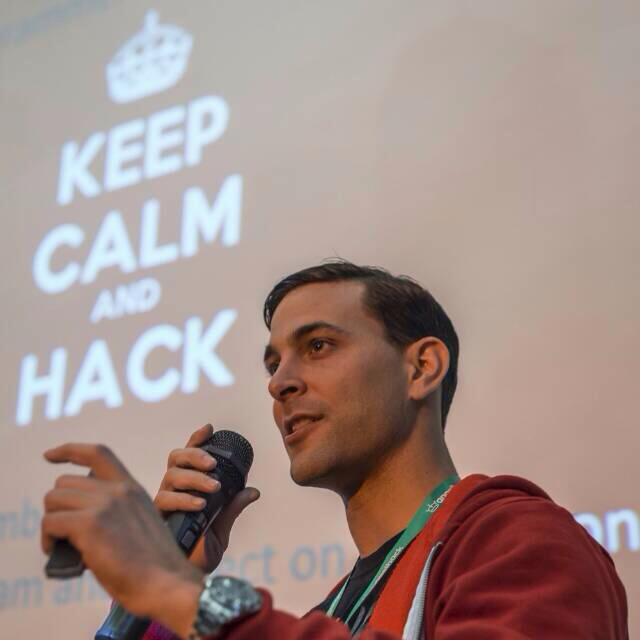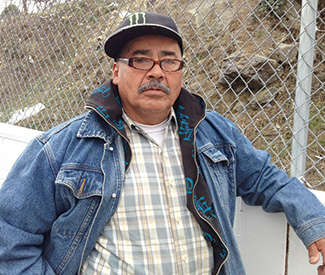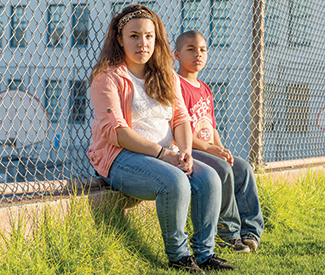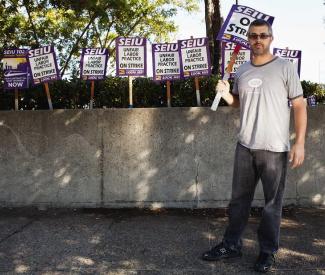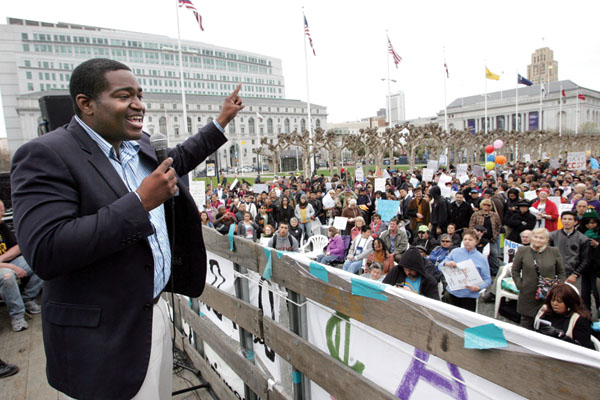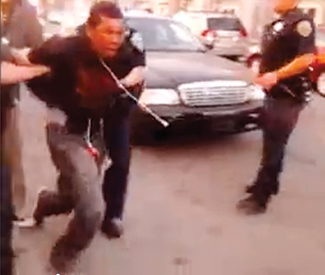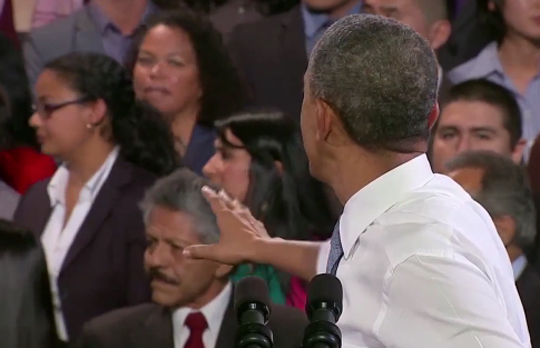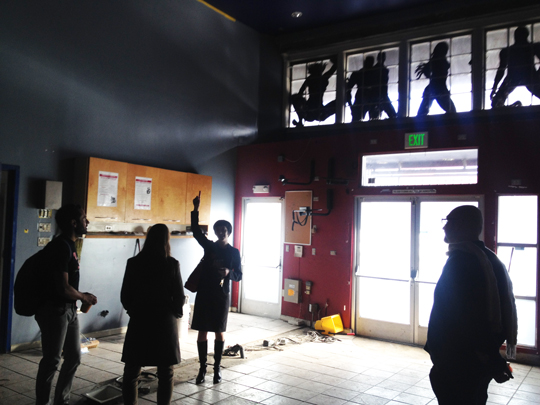joe@sfbg.com
On the coast of San Francisco’s national park, the Presidio, a battle is underway that may define what this unique place is really about.
Is the Presidio a historically significant natural area with a heritage worth celebrating and protecting? Or is the Presidio just the last great piece of undeveloped land in San Francisco, with the added benefit of being outside the jurisdiction of city regulators and taxes? Maybe it’s both.
The embattled parcel that could illuminate those questions is a 15-minute walk east from the Golden Gate Bridge, just off the beach of Crissy Field, which now houses Sports Basement. Once a slab of concrete and now a bustling waterfront teeming with bicyclists and joggers, it seems almost too beautiful and prosperous a place for a sporting goods store to be housed.
That may be why, a year ago, the powerful people who preside over the Presidio asked for a bevy of museum proposals to replace Sports Basement and its building.
For months, three teams with multi-million-dollar museum proposals hotly competed to rent the soon-to-be vacant property: an institute devoted to sustainability, an interactive science museum based around Presidio history, and a museum housing the extensive art collection of filmmaker George Lucas, the wealthy creator of the Star Wars empire.
Decisions made behind closed doors will seal the deal in the next few weeks and the winning pitch may shape the future of the Presidio. And like the Highlander, there can be only one. At least, that was the original thought.
Ultimately the decision won’t rest in the hands of the mayor, the Board of Supervisors, or any other elected official. For better or for worse, decision-making in the Presidio is entrusted to a seven-person “trust,” mostly appointed by the president of the United States: the Presidio Trust.
“I think, at times, you think that we all know what we’re doing,” Presidio Trust President Nancy Bechtle, appointed by President George W. Bush in 2008, told a crowd of hundreds at an Oct. 24 public meeting about the museum decision. “I don’t think that any of us have made up our minds on anything yet.”
But if recent reports from the San Francisco Chronicle are to be believed, the Trust is pushing to please everyone and disappoint no one. Citing anonymous sources, longtime media bromance Matier and Ross reported last week that the Presidio Trust was leaning towards Lucas’ museum proposal while feeling out alternative sites for the remaining projects.
Presidio Trust spokesperson Dana Polk admitted they were putting out feelers. “We don’t have specific sites identified, we’re just speaking to the teams to see if they are willing to consider other options,” she told the Guardian.
For a stretch of land that has moved slowly to bring in new development, each one a laborious and controversial process, the idea of allowing a trilogy of museums could have blockbuster implications for the Presidio and its tony surrounding neighborhoods.
As many advocates from different sides of the debate have said, any major development there could make the Presidio that much denser: bringing more cars, more tourists, and more San Franciscans to the remote northwestern corner of the city that many residents seem to ignore.
More than 400,000 annual visitors would flock to Crissy Field under any of the existing plans, while multiple proposals could more than double that. The two lead proposals, Lucas’ art museum and the Presidio Exchange, tell a tale of two Presidios. One is an interactive museum that celebrates the history of the natural setting of the park around it, and the other celebrates the digital history of the surrounding Bay Area.
It’s techies versus naturalists.
There are six criteria the Presidio Trust laid out for the projects, but only two of those divide the projects sharply: firstly, is it economically viable, and secondly does the project complement the Presidio as it is today?
Which proposal defines the Presidio’s present depends on how you see its past.
EMPIRE OF ART
Palo Alto of 1878 was as driven by technology as it is today. There and then, a young Eadweard Muybridge lined up a series of photo cameras with strings tied to their shutters along a racetrack, all to settle a bet. Do all of a racing horse’s hooves leave the ground as it runs?
The horse’s galloping legs pulled each string one by one, inadvertently making the world’s first series of sequential photographs (and yes, the hooves all left the ground). Out of technological advancement, cinema was born.
There’s a reason Lucas’ Presidio-based Lucasfilm studio houses a statue of Muybridge reaching to the sky. The man who pioneered Star Wars is really the man who pioneered the golden age of cinematic special effects, and he modeled his career after techno-artists like Muybridge. The heart of his proposed museum embodies that work.
Technology shapes art, Lucas believes, and film technology was birthed in the Bay Area.
“When I moved here in 1969 right out of college, I stayed here, I built my business here, I never made a film in Hollywood,” Lucas said at a public meeting on the mid-Crissy Field site, pitching his museum idea to the Presidio Trust and to the crowd. “I’m proud of being a San Franciscan.”
At 95,000 square feet, the Lucas Cultural Arts Museum is a love poem to the history of technological art. Statues of Star Wars and other cinematic characters line the walls in mock-ups. Promotional videos for the museum show kids staring excitedly at laptops and levitating X-Wings, the spacecraft of Jedi hero Luke Skywalker, with the push of a button.
In his videos and speeches about the museum, Lucas touts the Bay Area as a hub of cinema, promising his museum would draw Pixar and LucasFilm luminaries to teach and inspire the next generation of filmmakers. The museum has hands-on digital workshops cooked into the design of the building.
“This is our chance to show young people what cinematic design is,” Lucas said. He’s shown that dedication through his nonprofit, Edutopia, bringing digital lesson plans into public school classrooms.
But as much as Lucas values the technology of cinema he also values pop art, and Star Wars is the ultimate pop adventure fantasy.
Lucas said that storytelling art, “derisively called illustration,” never gets a fair shake in museums. Now is the time, and the main event in his museum would celebrate an artist made famous by Christmas cards and Boys’ Life Magazine.
The Star Wars director’s collection of Norman Rockwell paintings is widely known in the art world, touring the US and the Smithsonian American Art Museum. As with all art that appeals to the masses, ex-San Francisco Mayor Willie Brown loves it.
“Lucas has what amounts to a museum of Hollywood, mixed with the kind of art you don’t need a curator to explain,” Brown wrote in a July edition in his Chronicle column, Willie’s World. “Think the Empire meets Middle America.”
Willie Brown isn’t the only luminary to back the Lucas proposal. At each public meeting and in every public letter written to the Trust, an empire of rich folks and techies sang songs of praise for the Lucas Cultural Arts Museum.
Mayor Ed Lee, tech venture capitalist Ron Conway, Pixar film director John Lasseter, Saleforce.com CEO Marc Benioff, Twitter co-founder Biz Stone, MC Hammer, and Tim Ritchie, president of San Jose’s The Tech Museum of Innovation, all actively support the Lucas proposal.
The morals and mores of tech are all over the letter that Conway, the godfather of Silicon Valley, wrote to the Presidio Trust: “As you know, I have a passion for making and keeping San Francisco at the forefront of innovation. Certainly, there is no greater innovator around than George Lucas. His businesses have transformed the tech sector, specifically digital technology. San Francisco deserves this museum. It demands it.”
Though monied interests backed Lucas, it isn’t like he needs their cash. He pledged to personally finance the creation and operations of his museum.
The Star Wars franchise grossed more than $33 billion for Lucas, according to a study by Wired magazine. Lucas also owned Industrial Light and Magic, a pioneer in the special effects industry with a hand in everything from Back to the Future to the newest Harry Potter and Iron Man flicks. Now Star Wars and his special effects studios are owned by Disney, a deal penned just last year.
Some of that work came out of their studio in the Presidio, where the studio Lucas created pays $5.8 million annually in rent. The Letterman Digital Arts Center is one of two locations of ILM, and it’s an embodiment of Lucas’ plan for the area.
It’s a manicured campus, to be sure. A man-made creek runs down its center towards a serene pond, much lovelier than the swamps of Dagobah that Yoda called home. The white buildings with red shingled roofs confuse visitors into thinking they were erected by peoples long ago. And that’s the point, Lucas spokesperson David Perry told the Guardian.
“It looks like something that could’ve been built at the turn of the century,” he said.
Inside the Lucas museum is an homage to the tech history of the Bay Area, but the architecture’s Mission Revival style is an homage to the birth of San Francisco itself.
A LONG TIME AGO
Long before the rise of the hipsters, the first peoples to chill out in our foggy peninsula were the Ohlone tribes, dating back to the year 700. But the first who built what we know as San Francisco were Spanish soldiers driven by the fires of religion and conquest.
Lt. Col. Juan Bautista de Anza settled two areas when he first came to San Francisco in 1776: Mission Dolores and today’s Presidio. He argued with his superiors long and hard for settling the Presidio. They thought the fog and cold too harsh and inhospitable for colonization. How little things have changed.
Since the Ohlone were displaced or enslaved, the Presidio has long housed the military, segueing from the Spanish to the United States military, where it became an important installation during World War II.
Massive gun batteries sprouted on the hills of the Marin Headlands across the bay and in the Presidio, keeping a watchful eye to sea and airborne invaders from the west. Some of the barracks that housed the soldiers still stand today.
As recently as the ’90s, a lone cannon fired there every day as the flag was lowered, signaling the Marina and Richmond districts that evening was on its way. In 1994, the cannons were silent.
After the military ended its occupation of the Presidio, its fate remained uncertain. In what news reports at the time characterized as a Republican swipe against Rep. Nancy Pelosi, in 1996 Congress deemed that now San Francisco’s national park should be self-sustaining. Thus a novel quasi private-public institution was born: the Presidio Trust.
The Trust was mandated with making the Presidio a self-supporting entity, earning money with rents and development, and it has now finally achieved the goal of covering its own operating costs with no help from the federal government. It’s the only national park with a profit motive, and that changes the calculus of what’s built.
The Presidio is an entity in San Francisco, but not of San Francisco, in financial and political terms. Guardian investigations from Lucas’ first move to the Presidio catalogued an estimated $60 million in savings he achieved by not paying local San Francisco taxes. The new museum site may benefit from the same deal.
The Presidio of today is taking halting baby steps towards commerce. The main post houses a high school, a YMCA, and the Disney Museum. The cannon rests unused adjacent to a bowling alley.
The Presidio houses 3,000 residents, according to federal data, and 3,000 workers come in from the surrounding Bay Area to work. Since 1996, the area has transformed. But beyond just making money, the Presidio Trust is also tasked with maintaining its parkland and curating its past, and it’s that past that the other museum proposals celebrate.
The Presidio Exchange museum proposal focuses on the Presidio itself, its history and future.
OF AND FOR THE PRESIDIO
First off, this is not a rebels versus the empire tale. The Golden Gate National Parks Conservancy — a nonprofit affiliated with the Golden Gate National Parks Recreation Area — is at the helm of the Presidio Exchange site. Even though it isn’t George Lucas, its not a ragtag band of outliers either.
The Parks Conservancy built and currently maintains visitor attractions all over San Francisco’s national parkland, from the Warming Hut at Fort Point to Alcatraz. It has raised more than $300 million to support these projects since 1981, all in the name of curating its slice of important Bay Area history.
Its Presidio Exchange (PX) proposal is about about celebrating the area’s natural history. In physical terms, the PX architecturally embodies its name: A great big X. Each wing houses a different focus on Presidio’s natural world and history through interactive workshops, taking exhibit cues from local favorites like the Exploratorium.
One end houses “park place,” where arts will intersect with the environment. A great example that exists now is Spire, a construct of trees that forms a sculpted point near the Presidio’s Arguello gate. Another wing houses a demonstration kitchen, where food grown on-site will be fricasseed and fried in the name of education.
If the home and workplace are first and second spaces for people to live, the Parks Conservancy touts the PX as a “third space,” with a living room area built-in to look out on the water of the bay.
Stepping upstairs is a two-story spiral of differently angled screens, allowing visitors to choose their history lesson based on sightline — Ohlone or Spanish colonialists, or to ditch humanity altogether and learn about the ecosystem.
A third museum proposal, called the Sustainability Institute, has gained little political traction, but also follows the PX ideal of celebrating natural settings of the Presidio. That proposal describes it as “a place to explore the critical social, economic, and environmental issues of our time.”
More than celebrate history though, the PX also has spaces for visiting artists to perform in its “world stage.” Renderings of dancers litter its website. “It’s progressive and, most of all, inclusive,” said Janice Berger, a Parks Conservancy board member, in a promotion for the PX.
Nature aside, what the Parks Conservancy also does well is drum up support. At a public forum on the museum proposals on Oct. 24, a portion of the over 35,000 annual parks volunteers and networks that shaped the Golden Gate National Parks were united against the force that is George Lucas.
WHO IS IT FOR?
Those used to the public meetings of the Board of Supervisors would be in for a rude awakening at the Presidio Trust as the atmosphere was jovial and friendly, at least within the museum proposal fiefdoms. The meeting to discuss the mid-Crissy field site was divided into discernible camps: Tanned and weathered naturalists, upper crust folks with pocket squares in their coats, Presidio neighbors, and a handful of Lucas employees.
The windows of the former military cafeteria looked out onto the Golden Gate Bridge, and with the foghorn as musical accompaniment the commenters pleaded for their preferred Presidio project.
“Relatively speaking, the Lucas building is unrelated to the site,” former Presidio Trustee Amy Meyer said at the microphone, addressing the current board and the audience. The crowd thumped and cheered as she spoke.
Danya Sherman, who works in community engagement at Friends of the Highline in New York City, said the PX was like a sister-project with that train-track-turned-museum, with many of the same local benefits.
“Our plans were opposed by the mayor at the time, including much of the business community and others,” she said. “But after a tidal wave of community support, the High Line now is one of the top three most visited sites in New York. And its economic impact is estimated to be over $2 billion.”
“How do we get complete engagement?” asked Charles Jennings, questioning the Lucas proposal’s ability to do so. “Not just next door to the Presidio, but in the entire city?”
Ray Holland of the Planning Association of the Richmond said a coalition of neighborhood groups also thought the PX was the right way to go.
“They’re going to be some very tough [decisions] because all three of them are very solid proposals,” he said. “It’s our feeling that only one of them actually meets all of the criteria in your solicitations for those proposals, and that’s the Presidio Exchange.”
Becky Evans, local chair of the Sierra Club, lampooned the Lucas plan for not tying into the local natural area. Choosing the PX, she said would let the Trust “leave a legacy of something with monumental status.”
Over 30 speakers touted the benefits of the PX, but there were just a handful of Lucas supporters in tow that night, most of them his employees. Only two supporters for the sustainability institute spoke. Letters flew into the Trust as well, posted for the public to see.
As a general rule, parks and surrounding neighborhood groups sent letters of support for the PX, and tech groups and monied interests (like the San Francisco Chamber of Commerce) wrote in favor of the Lucas Cultural Arts Center.
At the end of the night, Presidio Trust President Bechtle told the Guardian that there were so many good reasons for each of the proposals she was flummoxed. She mimed her head bursting, hands flying outward.
As this issue goes to print, she and the board planned to meet privately to discuss interviews they conducted with project heads over the past two weeks. Perry, the Lucas project spokesperson, said Lucas made his case for over an hour to the board.
“This was about answering some of the individual board members’questions,” he said. Of the critique of not fitting with the natural setting like the PX, “I think it’s safe to say there’s not much in the Presidio now that was there in the beginning — including the eucalyptus trees.”
But other questions might provide a clue as to who’ll win the contract.
The Trust asked about compromise in the construction by scaling back the building to make it fit more harmoniously into the surrounding area. “Was there room for give and take in compromise?” Perry said Lucas was asked. “The answer was yes.”
Does that mean it’s in the bag?
With the serenity of a Jedi, Perry answered simply: “I can’t say.”
Throughout, all admitted the decision is difficult. Should the site be used as a beautiful backdrop for one man’s art collection to be enjoyed by all, or an inclusive science museum dedicated to the history and natural setting of the Presidio?
In just a few weeks we may see what the Presidio Trust’s vision is for the northwest corner of San Francisco.

